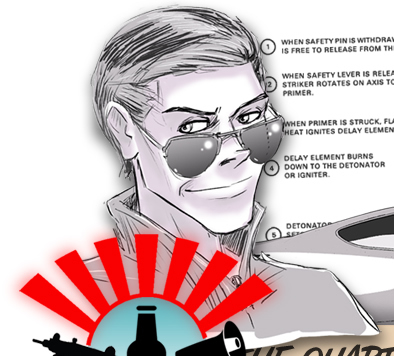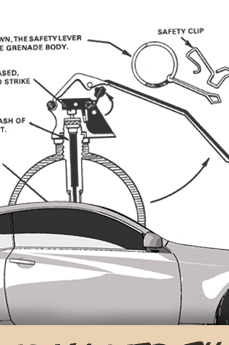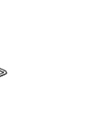| |
|
This section is gonna be light on product listings, and heavy on theory & recommendations. In the realm of chassis bracing, there are a number of snake oil products. If you are confused as to whether or not a product will be useful or not, at least take comfort in the fact that if it's an add-on product (e.g. it doesn't replace an existing stock part), it's not going to hurt the car. But it might make you look like a tool.
Strut Bars/Strut Tower Bars
This one item is referred to by two names, and often times, dumbshits will confuse other dumbshits when throwing the terms around, and once in a while some jackass will actually make a fast buck off said troglodytes because they missed the delineation in terms.
Your car is equipped with a strut tower bar from the factory. A fact you need to file away in whatever negligible brainspace you may have, is that your OEM strut bar is quite strong, very adequate for anything you want to do with the car (including racing), and in most cases is actually stiffer/stronger than aftermarket bars you might spend hundreds of dollars on.
The only way to actually improve your OEM strut bar in terms of structural rigidity is to fabricate a second pair of beams that jump from each strut tower into the aft firewall, forming a triangle that is bolted to the towers and the firewall. This is entirely unnecessary given the car's inherent structural rigidity, but it is nonetheless, the only way you can factually argue that a strut bar would measurably enhance your chassis' rigidity. This type of triangular bar is often found in shorter, compact rally cars like Evos, Subarus and so forth.
Aside from building a triangular bar, 9 out of 10 aftermarket strut bars are purely for decoration. If a strut bar is not tubular in design, however - a solid slab of milled metal (PowerAXEL makes a strut bar in this fashion) for example - it is actually weaker and detrimental to your car's rigidity, and in fact worse than stock.
**NOTE: There are one or two companies offering a rear trunk-tunnel brace; this is a massive waste of money. Your chassis is extremely stiff at the rear already because of the trunk tunnel - if the car were a hatchback we'd be having a different conversation.
Therefore as you are shopping for strut bars, here's what you got to choose from -
- GT Spec - Reasonably priced, looks clean and no frills, a perfectly understandable way to blow over one hundred and fifty dollars to dress up your engine bay.
- DC Sports - Looks fantastic, excellent fit and finish, a strong tubular design you could probably balance Chris Farley on. Excellent price, highly recommended.
- Cusco - Looks almost identical to the GT Spec, does the exact same job, and often costs more than twice as much. Has fancy blue metallic brackets. Wheeeeeeeee!
- Tanabe - Don't even think about it. It's a generic bar that actually bolts up to your existing OEM brackets/bar. Why waste the money?
- PowerAXEL- a solid piece of aluminum milled by some moron in Korea, and sold by another moron here. It actually weakens your chassis and the bolt holes don't line up properly for installation on your OEM brackets. You're better served by poking yourself in the eye with a sharp stick. Also it looks like dog shit.
- Anything else from Korea - Don't waste your money.
Chassis/Body Braces
Your car's chassis is already exceptionally stiff in terms of torsional (that means twisting, like when you stick your dick in a blender) rigidity and overall flex. Further bracing isn't really necessary for 9/10 builds unless you really just like the idea of knowing you did everything you possibly could to make your ride as uncomfortable as possible. Also, road race cars will typically benefit as the braces will keep you confident that every bit of energy is going to the tires and the pavement, and not into flex.
There are two types of chassis braces you will see sold for this car - Korean fancypants crap that doesn't actually affect the structure at all, (though they insist it does) and basic braces you may have seen commonly on other cars before.
Useless products note - anything that installs at the front of the car (like this thing) and can be seen with the hood up running behind headlights in the engine bay - Koreans, I'm looking at you - do jack shit. Your car already has subframes running below the motor, a strut tower bar, and there are mounts to install aftermarket forward underbraces which tie together the multiple subframes as well.
Available Products
Remember, alot of these braces mount to the underbody of your car, and most of you have a fetish for slamming your car to the ground. You WILL scrape and damage these braces constantly if your car is very low. These products are for performance oriented cars, and those types of cars, while lowered, are not slammed.
*Ultra Racing keeps threatening to release a full line of chassis bracing products for the car, though they are not available as of this writing. If they were to become available, they would be an excellent choice as their quality and racing pedigree is outstanding*
To brace the front end of your car, buy -
- GT Spec Front Lower 4 Points Ladder Brace - it looks just like the Cusco forward "powerbrace" and costs alot less. I don't know of any other vendors offering this.
- GT Spec Front Lower Subframe Brace - Additional stiffy goodness.
- MXP Braces - MXP offers a series of bracing products, I strongly advise against them given MXP's poor overall quality in everything they make as I've observed it in person, and for the same price, GT Spec offers better gear.
- Luxon Braces - Any product with the name "Luxon" on it (its from Korea, shocker) should be avoided like the plague due to incredibly poor quality.
To brace the underbody/floorpan/midsection of the car, buy -
- GT Spec Mid Lower 4 Points Brace - A little pricey at almost $300 but its something for the middle of the car which is often neglected. I am unaware of any other mfr. offering a functional mid-brace.
To brace the aft end of the car, buy -
A sway bar. No but seriously, there's not a whole lot more to do back here. Cusco makes a rear "powerbrace" which is a simple two-point bar that mounts to the two aft subframe points, essentially augmenting the subframe. It's a little pricey, and arguably unnecessary.
Rollcages
A full cage is necessary and used only by those who are either required to have the cage in the car per safety requirements of the track they are on, or for guys who have built a car that's genuinely powerful enough to get the driver into a serious amount of trouble in a very short time, street or otherwise.
A cage serves two functions - first, to tie together the body from as many points as possible, forming structural triangles with tubular beams welded together within the car. This will further strengthen the chassis in it's ability to remain rigid in shape under all manner of stresses during operation. Secondly, a rollcage keeps you from dying when you discover you and Steve McQueen are in fact nothing alike.
A few suppliers from Korea have come to the US attempting to sell whats called a haf-cage - this is a small rollcage that bolts into the rear interor of your car and typically replaces your back seat or renders it completely unusable. This is, despite what people may tell you, a show item. It may very well offer some degree of stiffness increase when mounted to your chassis but its not going to be noticable or measurable.
A full roll-cage is a hand-made custom tubular steel product you'll only be considering if you've got at least a couple grand burning a hole in your pocket (if you want to do it right) and/or you intend to race the car and the events require cages. There are varying standards of cages for various sanctioning bodies of automotive competition so the cost will vary depending on whether you are participating in, say, 24 Hours of Lemons or a NASA Road Race.
|
|
|
 |

































